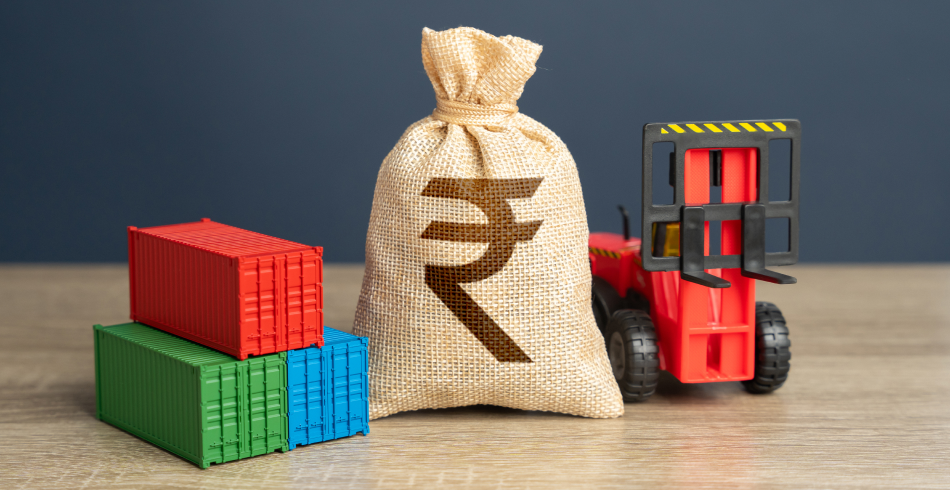Budget Outlook: A Look Back at 2024 and Logistics Industry’s Expectations for Budget 2025

As the country gears up for the Union Budget 2025, the logistics and infrastructure sectors are reflecting on significant milestones achieved under the initiatives announced last year and are anticipating more push for the sector in 2025.
Promises of 2024
The Indian government laid a robust foundation for the logistics sector in 2024, emphasising infrastructure development, rural connectivity, and ease of doing business. A year later, we assess the progress made in these areas.
The 2024 budget significantly increased capital expenditure, aiming to stimulate economic growth through infrastructure projects. The government prioritised spending on railways over road transport—evident in the $22 billion investment allocated to railway modernisation projects this fiscal year. These investments have driven expansion in rail capacity with a push to open new lines, improved travel speeds, and bolstered safety measures, aligning with the vision of making India a global logistics hub. The current year has seen the roll-out of 136 Vande Bharat trains, 97% electrification of broad-gauge lines undertaken, and major upgrades to infrastructure done which includes new lines, gauge conversion, and track doubling. With the electrification, the department is also targeting to achieve net zero carbon emissions on the railways by 2030.
Budget 2024 also provided a strategic push to the logistics sector through the National Logistics Policy (NLP). The 2024 budget supported this by allocating funds for improved infrastructure, such as cargo terminals, logistics parks, and freight corridors. In just two years, it has significantly reduced costs, enhanced supply chain efficiency, and positioned India as a stronger player in the global market. A key achievement has been the development of robust multimodal infrastructure through initiatives like the Bharatmala Pariyojana, which plans 35 multi-modal logistics parks to improve transit times and reduce carbon emissions.
The budget also reinforced NLP’s push for digital transformation through the Unified Logistics Interface Platform (ULIP), for real-time visibility, better coordination among stakeholders, and smoother documentation processes in a bid to reduce delays and boost efficiency across supply chains. The launch of NLP Marine and automated weighbridges have further optimised operations, while sustainability has taken a centre stage, with a growing focus on green logistics practices, including electric vehicles and renewable energy use in warehousing. Despite the notable progress, however, experts stress the need for continued momentum in 2025 to sustain this growth trajectory. Stakeholders expect further funding for ULIP’s widespread adoption, tax incentives for green logistics solutions, and policies to improve collaboration between private and public sectors.
Similarly, the NLP’s success in integrating road, rail, air, and waterways has not only strengthened transportation networks but also fostered better collaboration among stakeholders. The rollout of the Logistics Data Bank has further boosted supply chain transparency. However, challenges remain, including infrastructure gaps, digital integration complexities, and workforce upskilling, which need to be tackled.
The Union Budget 2024 took significant strides to address gaps in rural logistics by prioritising infrastructure development in underserved regions. With a focus on improving rural connectivity and expanding cold supply chains, the government aimed to open new markets and enhance supply chain efficiency. Investments in roadways, storage facilities, and technology for rural areas were positioned to enable agricultural and perishable goods to reach broader markets faster, reducing spoilage and improving overall economies of scale. The Pradhan Mantri Gram Sadak Yojana (PMGSY), which plays a transformative role in connecting rural communities, received an allocation of ₹16,100 crore in the current fiscal, up from ₹14,800 crore in FY24. The upcoming budget is expected to further increase rural road development funding by nearly 10%, recognising its multiplier effect on economic growth and social inclusion.
Since its inception in 2000, PMGSY has reportedly led to the construction of approximately 769,284 km of rural roads. The fourth phase of the scheme aims to build 62,500 km of rural roads over five years, connecting 25,000 habitations and revamping implementation strategies to accelerate progress. As per recent reports, a package of ₹70,125 crore was approved for this phase, with sanctions already granted for 6,614 km of road construction, including 3,380 km planned for West Bengal.
These developments provide a breakthrough for logistics companies, enabling them to expand their cold supply chain networks and warehousing capabilities in previously underserved rural areas. Improved rural connectivity will stimulate demand in emerging markets, allowing for better economies of scale, enhanced supply chain efficiency, and reliable customer services.
In addition, the budget allocated ₹2 lakh crore toward five youth-centric schemes, emphasising skill development and employment generation. These initiatives aim to create a better-equipped workforce while attracting private investment to strengthen India’s manufacturing ecosystem. For the logistics sector, this focus on upskilling is instrumental in addressing the rising demands of a rapidly expanding industry. As manufacturing and exports grow, a skilled logistics workforce will play a vital role in ensuring operational efficiency and aligning with global standards.
The union budget 2024 emphasised fiscal prudence targeting a fiscal deficit reduction to 4.9% of GDP. With continued growth in multimodal infrastructure and cargo parks, the logistics sector anticipates a 3.5X multiplier impact from increased demand across industries, promoting a modal shift toward greener logistics solutions.

Industry’s Wishlist for Budget 2025
Industry players are hopeful about the Union Budget 2025-26, anticipating significant announcements to further improve railway freight operations and infrastructure development. Key expectations include mega wagon orders, increased funding for safety and technology, and the deployment of advanced 12,000 HP electric locomotives. Industry leaders have also emphasised the need to increase freight train speeds to 50 kmph, extend Dedicated Freight Corridors (DFCs), and improve railway infrastructure for mining, steel, and cement industries. These policies aim to raise railway logistics to 45% and boost India’s industrial competitiveness.
For 2025, the railway budget is expected to rise to about Rs 3 trillion, reportedly supporting the expansion of Indian Railways’ 68,000 km track and the addition of 400 high-speed Vande Bharat trains by March 2027, alongside rail freight improvements.
Experts are expecting some provisions for improved port infrastructure and inland waterways development. Enhancing port infrastructure and developing inland waterways are critical for bolstering India’s manufacturing and export capacities, aligning with the Make in India initiative. Investments in modernising ports and establishing efficient inland waterway systems can reduce transportation costs, alleviate road congestion, and promote sustainable trade practices. Recently, the Inland Waterways Development Council announced Rs 50,000 crore investments aimed at strengthening the national waterways infrastructure in the country. Experts are hoping the push continues, along with the shift in focus towards railway modernisation mentioned above to complement these efforts.
Furthermore, the industry is expecting support for electric vehicles (EVs) in the upcoming Budget 2025, particularly for last-mile delivery logistics. This includes continued government allocation for EVs, such as two- and three-wheelers, as well as policies mandating logistics to go 100% electric by 2030. Tax incentives, like extending existing GST benefits to last-mile logistics services, are also anticipated to encourage corporate adoption of EVs. Furthermore, the industry expects government incentives, such as per kilometre or per kg CO2 subvention schemes, to promote EV adoption in logistics, and continued support for the development of Advanced Chemistry Cells (ACC), crucial for the sector’s growth.
Market experts are expecting the upcoming Budget 2025-26 to prioritise renewable energy and sustainability
, with a focus on accelerating India’s transition to a green economy. Specifically, the industry is looking for increased investments in solar, wind, and hydroelectric power projects to achieve the ambitious target of 500 GW of non-fossil fuel capacity by 2030. Additionally, expectations are for enhanced funding for renewable energy infrastructure, support for emerging technologies, and expanded subsidies for residential and commercial solar installations. The wish is for introduction of policies that promote sustainable mobility, agriculture, and water conservation practices, as well as incentivise the adoption of green hydrogen and carbon capture technologies.
Furthermore, the wish list includes support for micro and small enterprises in transitioning to renewable energy, and a balanced energy policy that integrates environmental sustainability with economic growth and employment generation.
A Path Forward
The progress achieved under Budget 2024 reflects India’s determination to transform its logistics and infrastructure ecosystem. The sector is equally optimistic that Budget 2025 will address pending reforms, drive innovation, and strengthen India’s position as a global logistics powerhouse. By building on past achievements and introducing forward-looking policies, India has the opportunity to redefine its logistics landscape and set new standards for efficiency and sustainability.